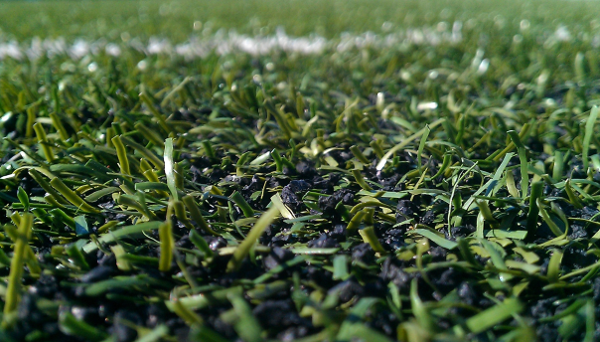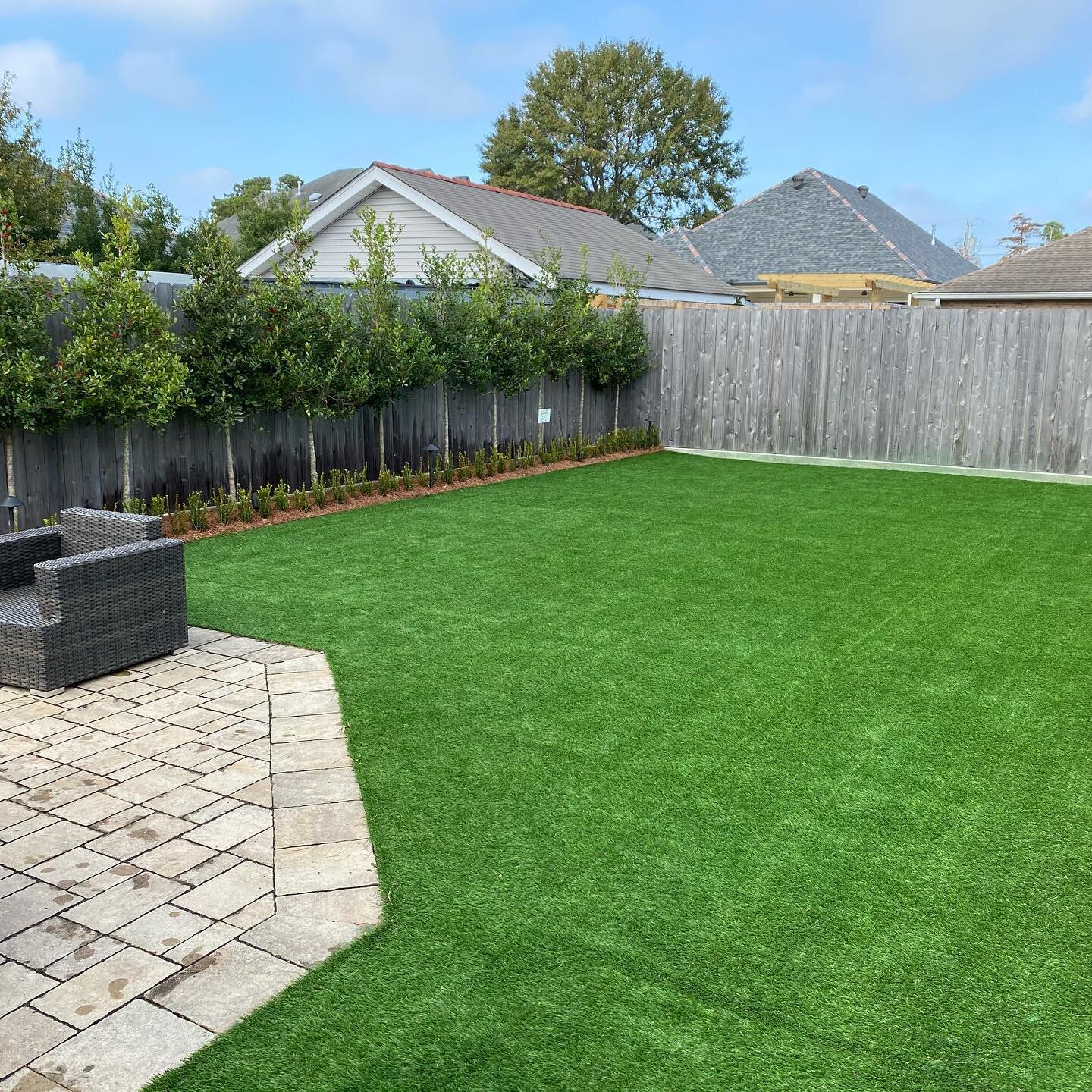Expert Arizona Turf Installation Solutions for Home and Commercial Use
Wiki Article
Explore the Environmental Conveniences of Opting for Synthetic Grass Solutions
The adoption of artificial grass options offers an engaging possibility to address pushing environmental obstacles. By considerably minimizing water usage and reducing the application of harmful chemicals, these alternatives not only promote lasting landscaping yet additionally shield local ecological communities. The reduced carbon footprint associated with decreased maintenance tasks contributes to a much more sustainable strategy to land monitoring. The ramifications of these advantages extend beyond plain conservation efforts, increasing questions regarding their lasting effect on environment preservation and general ecological equilibrium. Exploring these measurements exposes a complex interaction worth thinking about.Water Conservation Benefits
One of the most considerable benefits of man-made lawn is its ability to preserve water. Conventional lawn yards require substantial irrigation, particularly in areas vulnerable to drought or water constraints. On the other hand, artificial grass does not require watering, considerably decreasing the total demand for water resources. This feature is particularly advantageous in deserts where water shortage is a pressing worry.By getting rid of the need for routine watering, synthetic grass adds to sustainable landscape methods and aids mitigate the ecological impact of extreme water usage. The preservation of water extends to the reduction of overflow, which can lead to soil disintegration and river pollution.
Furthermore, the installment of artificial lawn allows house owners and municipalities to allocate water resources much more successfully, concentrating on important uses such as drinking water and agriculture. The shift in the direction of synthetic grass not only promotes accountable water usage however likewise lines up with wider ecological objectives focused on maintaining all-natural sources.
As areas significantly focus on sustainability, the water preservation advantages of synthetic grass offer a compelling situation for its fostering in residential and commercial landscaping projects.
Lowered Chemical Use
The transition to man-made grass considerably decreases the reliance on chemical therapies generally made use of in all-natural lawn maintenance. Traditional lawn management usually involves the application of herbicides, chemicals, and plant foods to promote growth and control parasites. These chemicals can pose threats to human wellness, neighborhood wild animals, and the atmosphere, contributing to dirt and water contamination.In contrast, fabricated grass removes the requirement for these hazardous substances. By reducing the launch of artificial substances into the ecosystem, fabricated turf promotes much healthier dirt and water systems.
In addition, the lack of chemical overflow related to fabricated lawn setups helps shield neighborhood waterways from pollution, supporting water life and maintaining biodiversity. Arizona artificial turf. As neighborhoods progressively prioritize lasting methods, deciding for synthetic grass presents a feasible service that lines up with ecological conservation objectives. Through this change, home proprietors can take pleasure in lavish green spaces without endangering eco-friendly health, leading the means for an extra lasting future
Lower Carbon Footprint

In addition, the setup of artificial lawn can lead to significant water conservation. Natural grass need considerable quantities of water for watering, which not only includes in the carbon footprint connected with water extraction and therapy but likewise pressures neighborhood water resources. On the other hand, artificial grass needs very little upkeep, requiring no watering, thus significantly decreasing water use and its connected energy prices.
Additionally, the long life of synthetic grass adds to its reduced carbon impact. With a life expectancy of approximately 15 years or more, the demand for regular replacements is reduced, causing much less waste and reduced power intake in production and disposing of standard yard choices. Overall, artificial turf presents a lasting choice for environmentally mindful landscaping.
Habitat Preservation
Environment conservation is a vital consideration in the argument over landscaping options, specifically when contrasting man-made grass to all-natural grass. All-natural yard yards frequently require extensive upkeep, consisting of making use of herbicides, pesticides, and fertilizers, which can detrimentally influence neighborhood environments. These chemicals can leach into the dirt and rivers, harming indigenous plants and animals and interfering with regional habitats.
On the other hand, synthetic grass offers a chance to reduce the eco-friendly impact of landscape design. By opting for artificial turf, house owners can lessen the disruption of all-natural habitats related to typical grass care methods. Synthetic grass removes the need for unsafe chemicals, thus shielding close-by wild animals and maintaining the stability of surrounding communities. In addition, the installation of man-made lawn can bring about the conversion of former turf areas into even more biodiverse landscapes, such as pollinator gardens or indigenous plant locations, which can support neighborhood wildlife.
Ultimately, the transition to synthetic grass not only conserves water and reduces upkeep initiatives but additionally cultivates a much more unified partnership between human activities and the native environment, promoting environment preservation at the same time.
Long-Term Sustainability
Long-term sustainability is a vital element in assessing the advantages of synthetic grass over typical lawn yards. One of the most substantial benefits of artificial turf is its sturdiness; it can last up to 15-20 years with very little maintenance, whereas all-natural lawn needs regular reseeding and replacement. This long life decreases the need for consistent sources, such as water, plant foods, and pesticides, which are crucial for preserving a healthy and balanced turf yard.In his explanation addition, synthetic turf adds to a decrease in carbon emissions associated with lawn treatment tools. Conventional grass typically require gas-powered lawn mowers, leaners, and blowers, all of which add to air pollution. Artificial turf companies phoenix. On the other hand, synthetic grass removes the need for such devices, advertising a cleaner setting
Moreover, the production of synthetic turf progressively makes use of recycled materials, boosting its sustainability profile. As makers take on green techniques, the environmental footprint of synthetic grass remains to lessen.

Final Thought
The adoption of artificial grass solutions presents considerable ecological benefits, consisting of substantial water conservation, decreased reliance on harmful chemicals, and a lower carbon footprint. Additionally, synthetic grass help in protecting all-natural habitats by lessening land disturbance and promoting long-term sustainability through making use of durable products. Collectively, these elements underscore the capacity of synthetic grass to add positively to environmental wellness and provide a sensible choice to traditional landscaping practices in an increasingly resource-conscious world.In contrast, fabricated lawn does not need watering, considerably reducing the total need for water resources. By decreasing the launch of artificial compounds right into the environment, synthetic lawn advertises healthier dirt and water systems.
Additionally, the installation of fabricated grass can result in substantial water preservation. In contrast, man-made turf requires very little upkeep, requiring no watering, consequently considerably reducing water usage and its linked energy expenses.

Report this wiki page